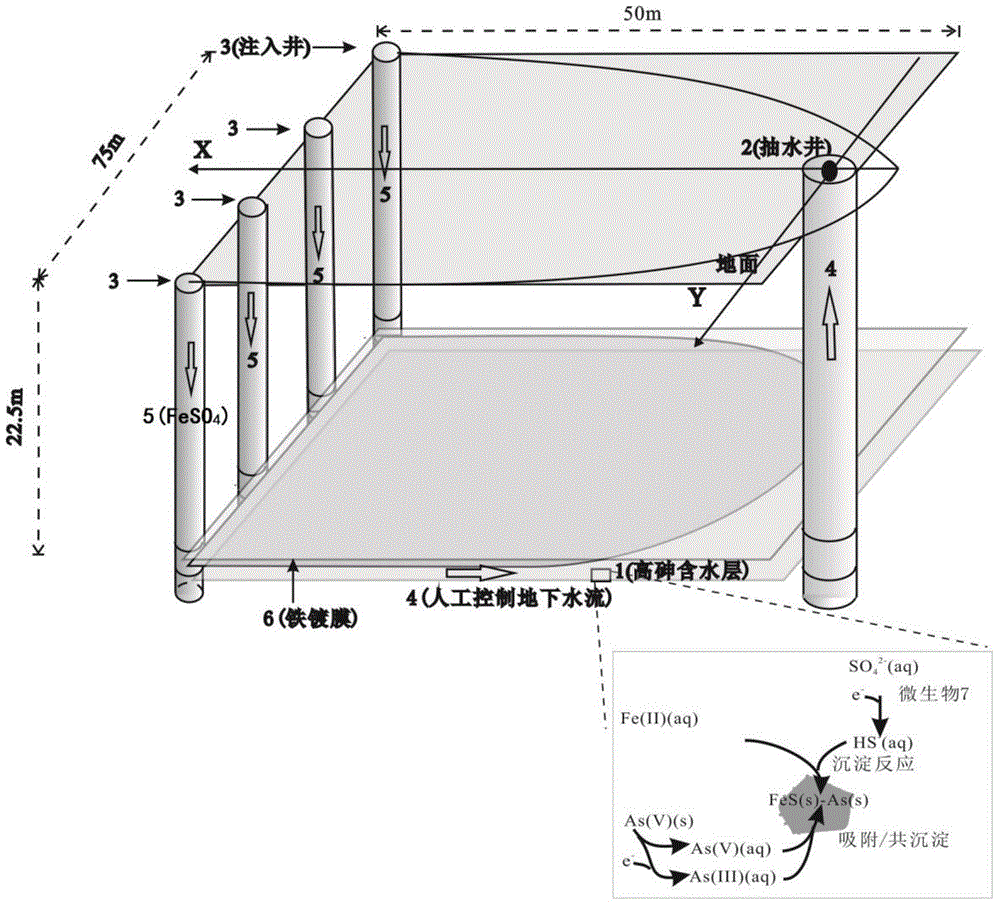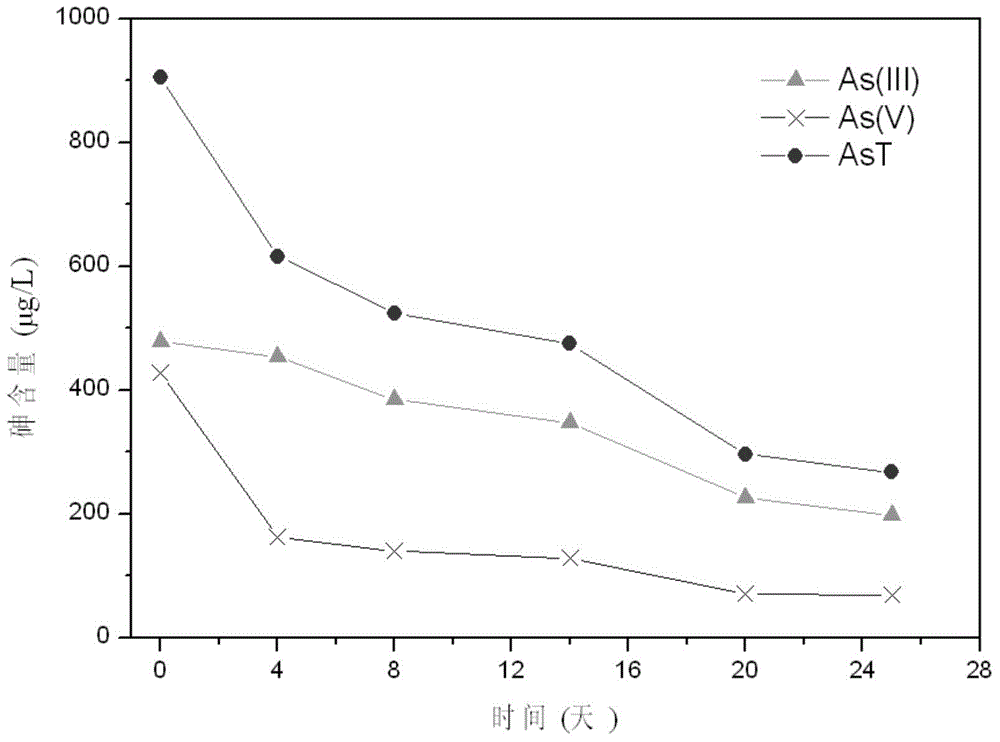In-situ arsenic removing method of reductive underground water based on sulfate
A groundwater and sulfate technology, applied in chemical instruments and methods, water/sewage treatment, adsorbed water/sewage treatment, etc., can solve the problems of large volume, high cost, difficult to identify, etc., and achieve high arsenic removal efficiency and technology. simple effect
- Summary
- Abstract
- Description
- Claims
- Application Information
AI Technical Summary
Problems solved by technology
Method used
Image
Examples
Embodiment Construction
[0036] Such as Figure 1-2 As shown, an in-situ arsenic removal method for groundwater based on sulfate reduction includes the following steps:
[0037] (1) Determine the working area, clarify the local hydrogeological and hydrochemical conditions of the working area, select the target high arsenic aquifer 1; determine the following parameters of the aquifer: aquifer thickness B (m), permeability coefficient K (m / d), effective porosity n e , Water storage coefficient S, regional hydraulic gradient I, regional groundwater velocity U (m / d), dispersion coefficient (m 2 / s), and determine the direction of groundwater flow;
[0038] (2) According to the hydrogeological parameters of the existing aquifer and the actual pumping volume, the work area is further divided into several work area unit units (or hydraulic capture areas). The work area units are the further division of the work area to facilitate the use of the following steps To carry out the restoration work with the calculat...
PUM
| Property | Measurement | Unit |
|---|---|---|
| pore size | aaaaa | aaaaa |
Abstract
Description
Claims
Application Information
 Login to View More
Login to View More - R&D
- Intellectual Property
- Life Sciences
- Materials
- Tech Scout
- Unparalleled Data Quality
- Higher Quality Content
- 60% Fewer Hallucinations
Browse by: Latest US Patents, China's latest patents, Technical Efficacy Thesaurus, Application Domain, Technology Topic, Popular Technical Reports.
© 2025 PatSnap. All rights reserved.Legal|Privacy policy|Modern Slavery Act Transparency Statement|Sitemap|About US| Contact US: help@patsnap.com



